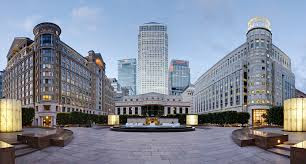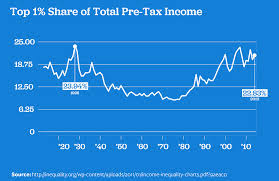http://www.theguardian.com/cities/2016/feb/03/music-scenes-berlin-london-seattle-new-york
 |
18th-century Vienna, Austria
en.wikipedia.org |
Hello Everyone:
Cities are wonderful places to indulge in one's artistic endeavors. Throughout the cultural history of humanity, painters, poets, musicians, designers, et al have flocked to urban centers to practice their art form and find inspiration. One product of the urban fountain of creativity is modern music. Cities such as New York, Berlin, London, and Seattle have fostered music inspired by their "the streets" or neighborhoods. In his recent article for
The Guardian, "From Berlin's warehouses to London's estates: how cities shape music scenes," Ian Wylie writes, "Yet the actual link between the music they make and the built environment where they do is generally underplayed-spoken about as a matter of mood, or a source of lyrics." Music historian typically point to a "critical mass of musicians as being crucial to the birth of a scene:..." A music scene could mean the classical composers of 18th-century Vienna or the Mods of 1960s London. However, what about the city itself? The city is just a place for musicians to gather and endlessly make music. Although, David Bowie's residency in Berlin took this relationship to a more intimate level.
 |
Detroit, Michigan
Kevin Chang/Flickr
citylab.com |
Ian Wylie poses this question, "But what if a city's role isn't quite so one-note?" This was a question that
Washington Post columnist David Maraniss obsessed over, particularly in regards to Detroit, Michigan. Mr. Maraniss said,
I was fascinated by the idea of why the musical magic happened in Detroit...What is it about some cities and civilisations that bring about these creative bursts.
During the writing of his history of Detroit,
Once A Great City (http://www.amazon.com), Mr. Maraniss listed the usual reasons for the rise of Motown in this city. "First, the migration of African Americans from Alabama, Georgia, Mississippi and Louisiana for factory jobs, bringing with them the oral traditions of church music, jazz and blues. Next, the entrepreneurial genius of one family, Berry Gordy Jr and his four sisters, who created Motown and made it flourish."
 |
Detroit's Northeast Side, 2010
davidjordano.com |
As David Maraniss delved deeper into the city's economic geography, discovering that the overwhelming majority of 20th-century Detroit lived in two-story single family, not anonymous apartment towers, which made it easier for local piano makers Grinnell Brothers to deliver pianos including the one the went to the Gordy household. Mr. Wylie, observes, "The particular construction of homes in Detroit, unlike many other predominantly black factory cities in the US, meant that they were crucial to the development of the Motown sound."
 |
Earl Van Dyke
en.wikipedia.org |
David Maraniss marvels, I had no idea about the role of pianos, specifically Grinnell Brothers...until I started interviewing Motown musician, singers and local historians, all of whom made the connection and said they pianos in their homes.
You become very aware of how important the piano was to the Motown sound was, for example, when you listen to Earl Van Dyke's wonderful keyboards on "Ain't Too Proud to Beg, My Guy," or "For Once In My Life."
This got Ian Wylie thinking, "if Motown owed its life to easy ground-floor access, where else has urban design shaped musical genres?"
The garage of grunge
The garage of grunge-Seattle, Washington. Say the words grunge rock and the first thing that comes to mind is Nirvana and Pearl Jam. Grunge's birth band was the Screaming Trees in the eighties, birthed in the garage in the back video store. The video store was owned by the parents of Van and Gary Lee Conner, in the city of Eilenberg, outside of Seattle. As youngsters, the Conner brothers decorated the garage with with paint, posters on the ceiling, Indian tapestries and psychedelic bedspreads on the wall. For a period of time, it was Gary Lee's home. Mr. Wylie writes, "When they were joined by singer Mark Lineman and drummer Mark Pickerel, the new band played a couple of small shows there."
 |
Seattle, Washington
caper.com |
Gary Lee Conner, co-founder of the Screaming Trees, fondly recalled,
The best thing about the garage was that it was it was totally isolated, like another world we had created for the band...Since it was downtown, we could make noise all night long and not have to worry about bothering anyone.
Garages are meant for parking cars or storing the holiday lights but they have also been the place that kickstarts creativity. Steve Jobs and Steve Wozniak founded Apple (fight the power) in the Jobs family garage. Be that as it may, for the Screaming Trees, the garage was than a practice room; "it physically shaped their sound."
 |
The Screaming Trees
screamingtrees.com |
Gary Lee Conner continued,
Like most garages, ours had a concrete floor and drywall, with boxes of junk stored around the place...But the echoes and reflections from that stuff created a sound different than say, a club or a studio...The garage helped to reinforce the rawness and the energy of the music. We never had another place like that after we moved to Seattle, but the spirit of our music never really changed.
Ian Wylie waxes prosaic, "Just listen to the soaring screech of his guitar on the band's 1986 debut album, Clairvoyance: that scuzzy, distortion-laden sound."
Twenty-five after Nirvana's landmark album, Nevermind, musicologists still wonder why grunge came together in the cities of the Pacific Northwest. Geographic isolation was one reason: Seattle in the eighties was not the Seattle of Starbucks and Microsoft. In fact it was about as far from the music industry centers such as New York or Los Angeles. University of Tennessee professor Dr. Tom Bell told Mr. Wylie, There was a culture of innovation and experimentation, 'what do we have to lose?' attitude. Of course, there is the omnipresent rain and the damp marine climate that did a much better job of persuading musicians and singers to stay indoors and practice than a parent getting after their child to do their piano lessons. Not that the garages were dank places, quite the contrary, they were warm enough to stay in without the need for a space heater. Not like the unheated garages of Minneapolis, which could drive even the heartiest musician away.
 |
Canary Wharf, east view from Cabot Square
London, England
en.wikipedia.org |
The tower blocks of grime
The shiny skyscrapers of One Canada Square in east London's Canary Wharf business district was a powerful inspiration for Dylan Mills, who grew up two miles away, on the Crossways estate in Bow. After winning the 2003 Mercury prize the song "Boy in Da Corner, from his debut grime album as Dizzee Rascal, Mr. Mills said,
It's in your face...There are rich people moving in now, people who work in the city. You can tell they're living the same way as us.
The high-rise apartment blocks of East London were the ideal location for underground radio stations that regularly featured grime on their playlists. Pirate stations such as Rinse and Déjà Vu had a a strong enough signal to broadcast far and wide: using a 40W transmitter on tower blocks that could reach listeners within a 40 mile radius.
 |
Grime Feature
ukgrime.co |
The location of the mobile radio station were top secret, but usually found in the council estates. Mr. Wylie writes, "'Station managers' were locked in a non-stop game of hide and seek with police: scaling balconies, leaping between rooftops, concealing transmitters inside rooftop ventilation ducts." Real James Bond stuff.
Photographer and film-maker Simon Wheatley, who spent ten years documenting the lives of grimes musicians, added,
These tower blocks were labyrinthine...What were the police going to do? Search in every flat where a radio station might be? It was all very hush-hush. You had to make a phone call before some would come down and let you in. Often the station was in someone's home, sometimes in their kitchen, microphone and decks next to the sink.
Over cups of tea with the musicians's mums, Mr. Wheatley observed how the urban landscape and geography of east London inspired the dark themes and music of grime.
The time of grime was time of postcode warfare and stabbings...Territorialism meant some of these young people were scared to get a bus that would go through certain neighbourhoods. Estates had a fortress-like physics appearance, and I was to see my photographs when heard the dark beats of grime.
 |
Berlin, Germany
carjet.com |
The warehouses of techno
Berlin, Germany might not have been the birthplace of techno but this genre of music has thrived in the German capitol with its abundance of abandoned spaces that easily accommodate dance parties. Der Spiegel journalist and author of a book on the city's club scene told Mr. Wylie, "When the Berlin Wall came down, 30% of the buildings in east Berlin were empty."
Techno in Berlin happened in ruins...E-Werk was an empty electricity factory. Trevor was was the empty bank vault of a former shopping centre. Planet was an empty warehouse.
 |
Tresor
Berlin, Germany
flow.eu |
The club DJs enjoyed a sense of liberation making music in places were, previously, they would have been shot or jailed for trespassing. Ian Wylie writes, "...in a book by journalists Felix Denk and Sven von Thülen, Detroit DJ Robert Hood describes
"how the
dark and murky clubs of post-Wall Berlin, such as Tresor, transformed techno from
a fantasy-based electronic sound to a more
reality-based sound- more
brutal and assertive, as local DJs began intensifying the speed and abrasiveness of the sound into something harsher, more hardcore."
Tresor founder Dimitri Hegemann believes that the 100cm (39.37inches) of the his subterranean club played a part in the harsher sound. Mr. Hegemann told Mr. Wylie,
The sound was really hard and deep. The room was not too big and the ceiling not too high, so that the sound waves had no time to distort...It sounded clear, but everything was analogue. Other club owners began checking our sound systems to do the same.
 |
Lodger
David Bowie
cdandlp.com |
The cavern-like cold-war era warehouses of Berlin also became studio spaces for artists and musicians. David Bowie recorded most of his Berlin trilogy:
Low, Heroes, and
Lodger at Hansa studios in the Kreuzberg in west Berlin. A short distance from the Berlin Wall, Hansa was nearly isolated building, riddled with shell-holes, most of the windows bricked up. From the control booth, Mr. Bowie and producer Tony Visconti had a clear view over the Wall, looking directly at the Russian guards in their gun turrets, who returned the gaze through their binoculars. David Bowie's West Berlin, marooned inside East Germany, was
a city cut off from its world, art and culture, dying with no hope of retribution.
When Mr. Visconti returned to Hansa in 2015, he related how the city informed those recordings,
The danger created the sound...I've heard records made here afterwards, and they didn't have that impending doom. When we came here [to record], we knew what we were doing. When you record a group of musicians, you're not only recording the music, you're recording the environment. And Berlin was the perfect place.
 |
Bronx Tower
Sedgwick Avenue
Bronx, New York
nytimes.com |
The community centres of hip-hop
If there is one genre of music that gives a loud shout out to the streets, it is hip-hop. However, according to Fordham University professor of history and African-American studies Mark Naison, hip-hop is really a product of the community centers. Prof. Naison told Ian Wylie,
New York was the one city where public housing was not abandoned or knocked down or allowed to deteriorate even during the worst years of arson, disinvestment and deindustrialisation...And more of the early hip-hop jams took place in the community centres than than on the streets.
 |
Afrika Bambaataa
picpix.com |
The housing projects had community centers, staffed by social workers. Many of the centers sponsored talent and dance shows where bands and DJs could perform. The centers were also bridges between the generation and the communities, giving young artist the opportunities to rhyme over beats, to perform with Rhythm and Blues singers, Latin and Funk bands "who kept alive older traditions of instrumental and lyrical virtuosity, agrees Naison."
One example is DJ Kool Herc, who premiered his first jams in the Sedgwick Avenue community center in west Bronx. The legendary Afrika Bambaataa held his first parties in Bronx River Community Center, kickstarting hip-hop in his part of the Bronx. The Bronx is far from the glitter and glamour of Manhattan or the too cool for you Brooklyn. It is a place where many people tenements or high-rises where air conditioner was unaffordable, therefore, public spaces became a better option to gather. This is especially true during the summer month, with doors and windows opened wide to let some cool air in. Whatever music was being played or performed, it was shared by the whole neighborhood.
Music, in all its glorious genres, is the soundtrack of our environment. Whether its techno, grimes, hip-hop, the Motown sound, or Grunge, music is the reflection of where we live. In Los Angeles, the surfers of the fifties and sixties provided inspiration for the Beach Boys. Laurel Canyon inspired the singer-song writers of the seventies. Music reflects where we live at a moment in time. That is a beautiful thing.


















































